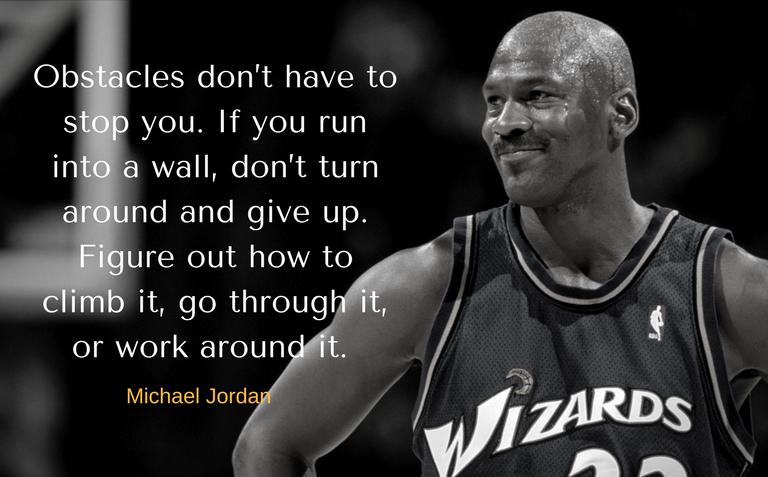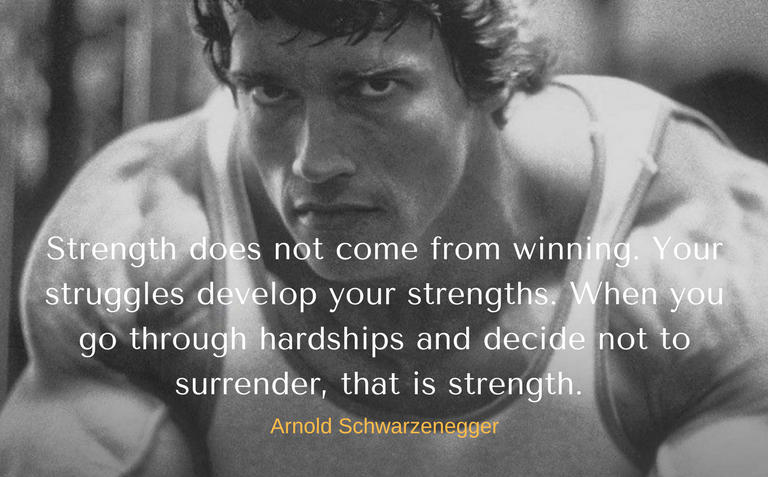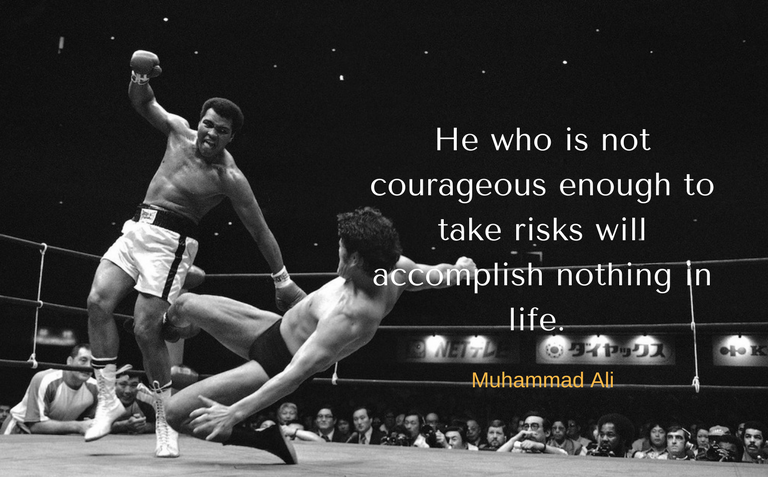Being a top athlete takes a lot of grit and perseverance. Because whenever one feels complacent is exactly when one might fall flat on one’s face. So, professional sports are constant acts of pushing past limits. And not every person can manage such levels of physical and mental efforts.
That is why top athletes often have these extraordinary nuggets of wisdom they occasionally share with the world. And what’s fascinating is how these pearls of wisdom are relevant in trading. But not only — they’re also relevant in business, relationships; in fact, they’re relevant in life in general.
Here are some of the best motivational statements by legends in sports:
1. Success is where preparation and opportunity meet. – Bobby Unser, automobile racer
In trading: Rash decisions that will leave you in a weak position. Always come prepared.

2. Obstacles don’t have to stop you. If you run into a wall, don’t turn around and give up. Figure out how to climb it, go through it, or work around it. – Michael Jordan, basketball icon
In trading: When failure smiles at you, the best thing you can do is smile back, while acknowledging that the lessons that stick are those that hurt. Your failures are stepping stones on your way to success.
3. I’ve missed more than 9,000 shots in my career. I’ve lost almost 300 games. 26 times, I’ve been trusted to take the game winning shot and missed. I’ve failed over and over and over again in my life. And that is why I succeed. – Michael Jordan
In trading: Again, be patient with yourself. At first, you will make mistakes; you will fail. But you want to fail. You need to fail. Failure is good for you. It builds resilience of mind; develops wisdom; it is the foundation upon which mastery, success, and happiness rest upon.
4. In baseball and in business, there are three types of people. Those who make it happen, those who watch it happen, and those who wonder what happened. – Tommy Lasorda, Hall of Fame baseball player and manager
In trading: You miss 100% of the trades you don’t take. Stay active, trade small. Engagement leads to success. There is no overtrading if you’re trading a proven system.
5. There may be people that have more talent than you, but there’s no excuse for anyone to work harder than you do. – Derek Jeter, longtime Yankees shortstop
In trading: You have to depend on your own work ethics to get ahead in this field. Don’t wait for trade ideas from others. Work on being completely self-reliant.
6. Everybody’s got plans… until they get hit. – Mike Tyson, boxing icon
In trading: The satisfaction of instincts cannot be the main way by which you place and manage your trades. You need a plan, and you need to follow it with consistent and conscientious regularity.

7. Strength does not come from winning. Your struggles develop your strengths. When you go through hardships and decide not to surrender, that is strength. – Arnold Schwarzenegger, professional bodybuilder, actor, businessman, politician
In trading: Muscles need a certain amount of stress in order to grow. It is with muscles as it is with life –meaningful growth requires challenge and stress. So, don’t think of losses, mistakes, and failures as the end of the world. They’re just opportunities for growth.
8. Bodybuilding is much like any other sport. To be successful, you must dedicate yourself 100% to your training, diet and mental approach. – Arnold Schwarzenegger
In trading: Whoever focuses solely on his/her market edge while neglecting his/her trading psychology will soon discover trading to be an unwinnable battle.
9. Champions keep playing until they get it right. – Billie Jean King, International Hall of Fame tennis star
In trading: Whatever you do, trade small. If you can’t stay in the game, you can’t learn. It’s simple as that. Failures and mistakes have to be small —so small that they can teach you instead of ruining you. If they’re too big, you’ll eventually get booted out of the game.
10. A good hockey player plays where the puck is. A great hockey player plays where the puck is going to be. – Wayne Gretzky, hockey icon
In trading: It doesn’t take a lot to predict price action (human behavior) and capitalize on it. You only have to assume that people will always try to escape a disagreeable situation with the smallest possible expenditure of intelligence. With that in mind, you need a plan to guide your own behavior, and you need to trade that plan with discipline and vision.
11. Always make a total effort, even when the odds are against you. – Arnold Palmer, golf legend
In trading: Part of being a good trader is knowing how to go through drawdowns with grace, courage, patience, and vision.
12. The more difficult the victory, the greater the happiness in winning. – Pele, Brazilian, soccer legend
In trading: You fall, you fail, but after some time, you learn. And eventually, you master! Then get-rich-quick prospectors watch you from the outside, jaw hanging. They see how trading is simple and they think it’s a straight line. It never is.

13. He who is not courageous enough to take risks will accomplish nothing in life. – Muhammad Ali, Boxing icon
In trading: Here’s something that’ll raise a lot of eyebrows: Even if you’re a consistently profitable trader, you will never become incredibly wealthy by being too conservative. For that to happen, you gotta be wild sometimes, take some daring bets, with size, and be truly ok with failure.
14. It isn’t the mountains ahead to climb that wear you out; it’s the pebble in your shoe. – Muhammad Ali
In trading: When you approach the markets with equanimity, all mental stories are thrown away, and what remains is just the market as it is.
15. Persistence can change failure into extraordinary achievement. – Matt Biondi
In trading: Patience/ resilience/ non-delusion will be rewarded by the markets.
Bonus. If you aren’t going all the way, why go at all? – Joe Namath, Hall of Fame football quarterback
In trading: Resilience is key! Do what you have to do to stay in the game long-term. In due time, you’ll be able to:
- Trade and understand the market like no one
- Trade with size
- Turn small accounts into big accounts
And best of all: Nobody will be able to take that away from you.
The original compilation is by Yvan, appears on tradingcomposure.com and is available here.






 Figure 1: Money Flow Index of CTRP Fluctuating Between the 0 and 100 Levels
Figure 1: Money Flow Index of CTRP Fluctuating Between the 0 and 100 Levels





